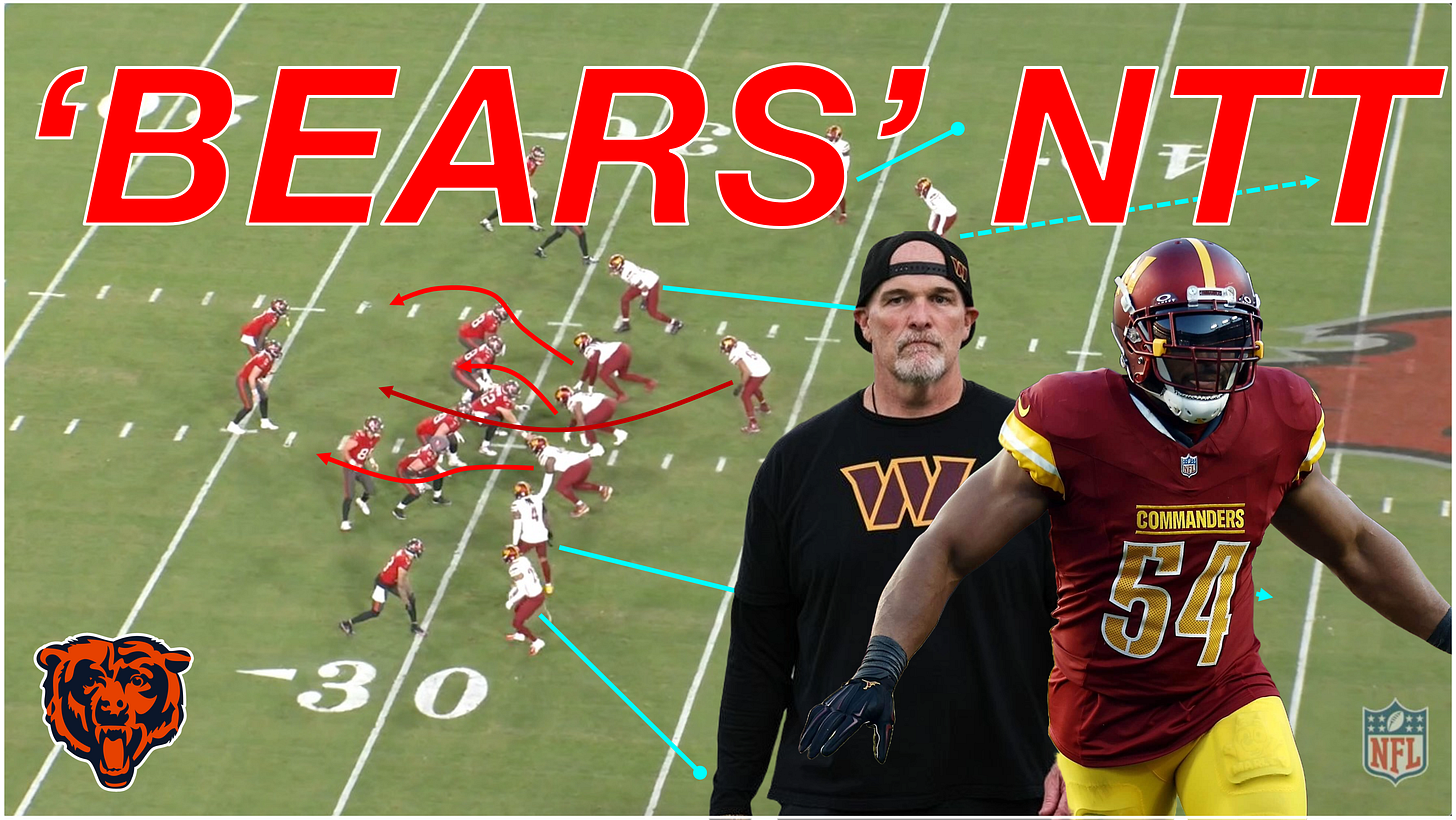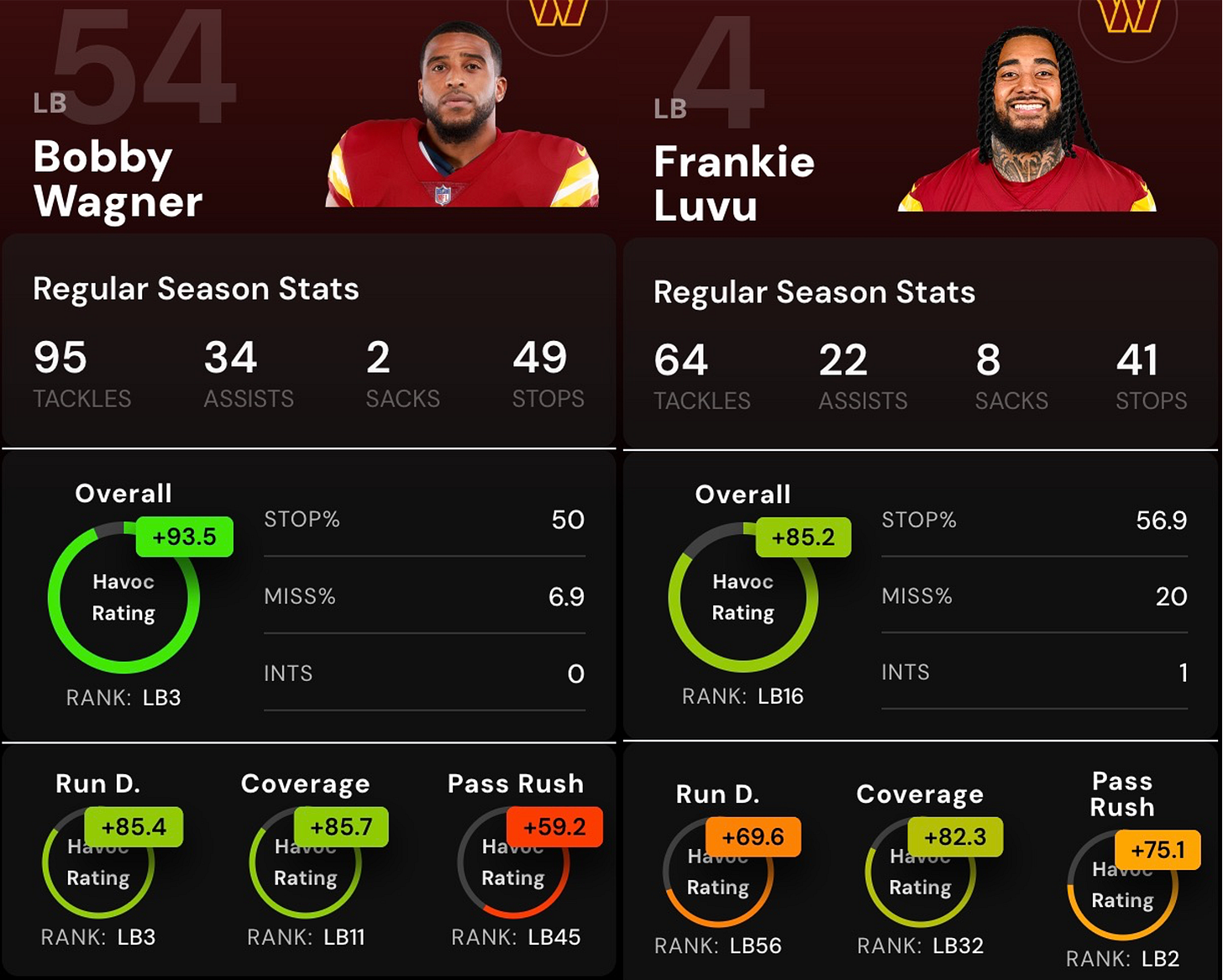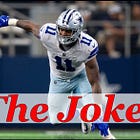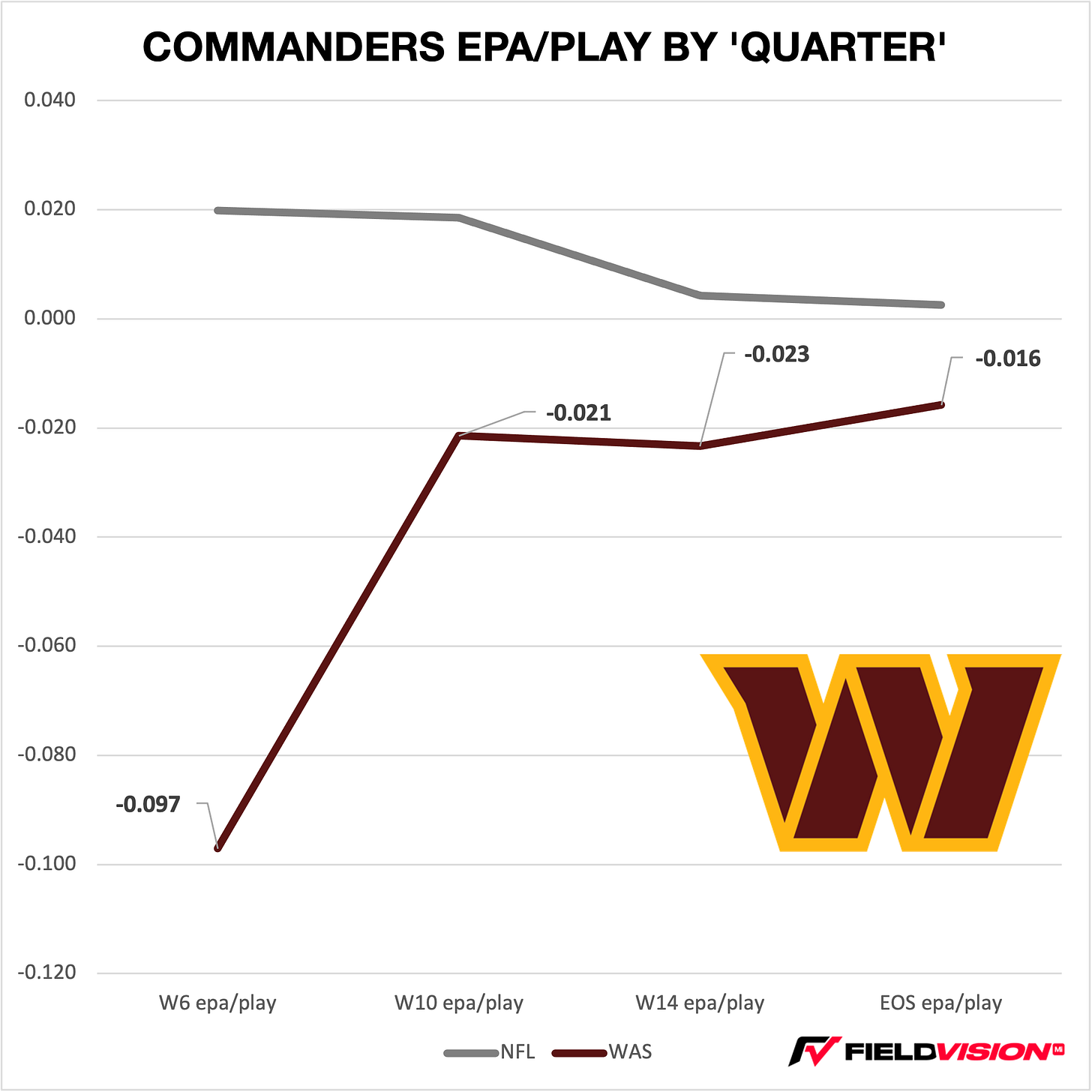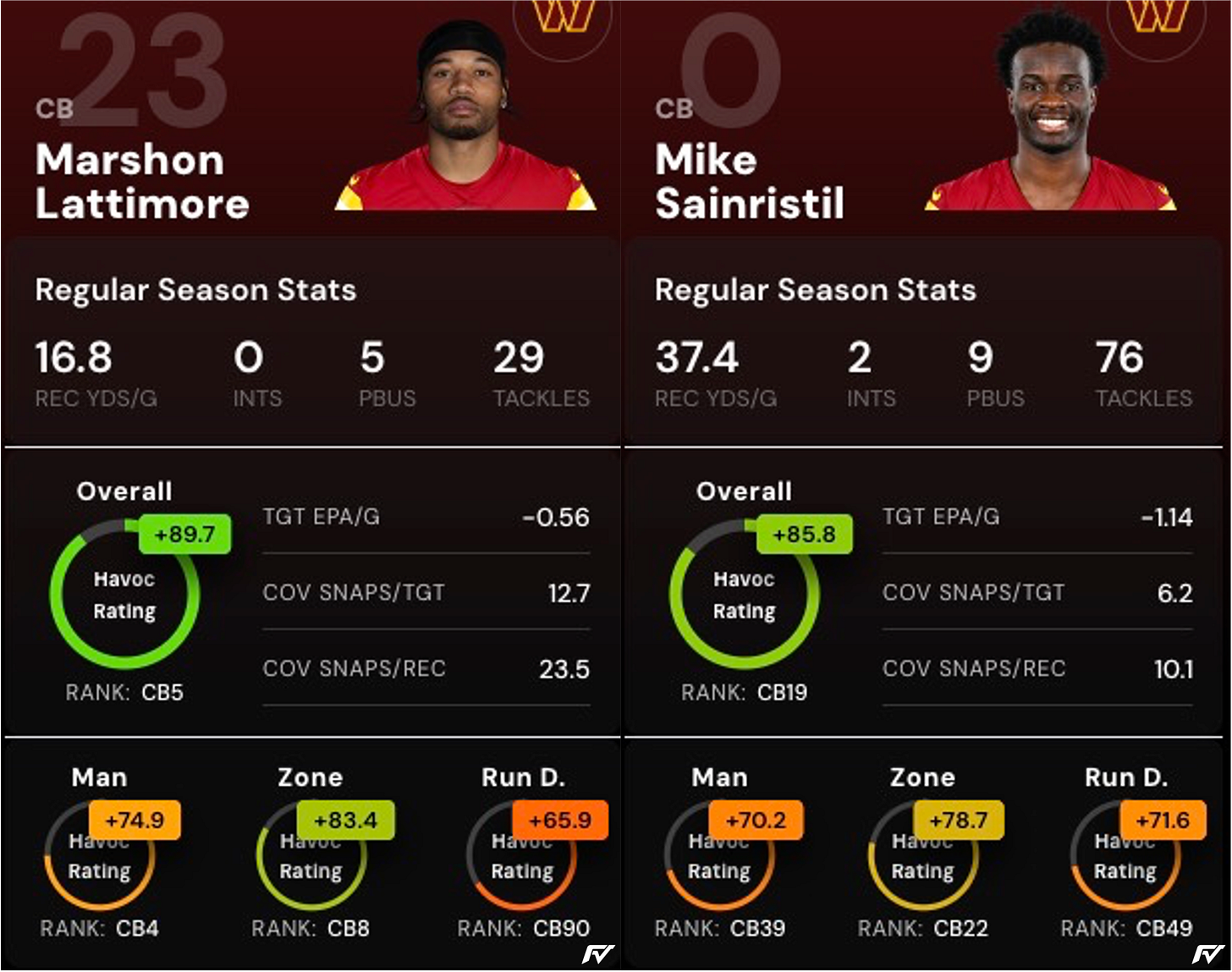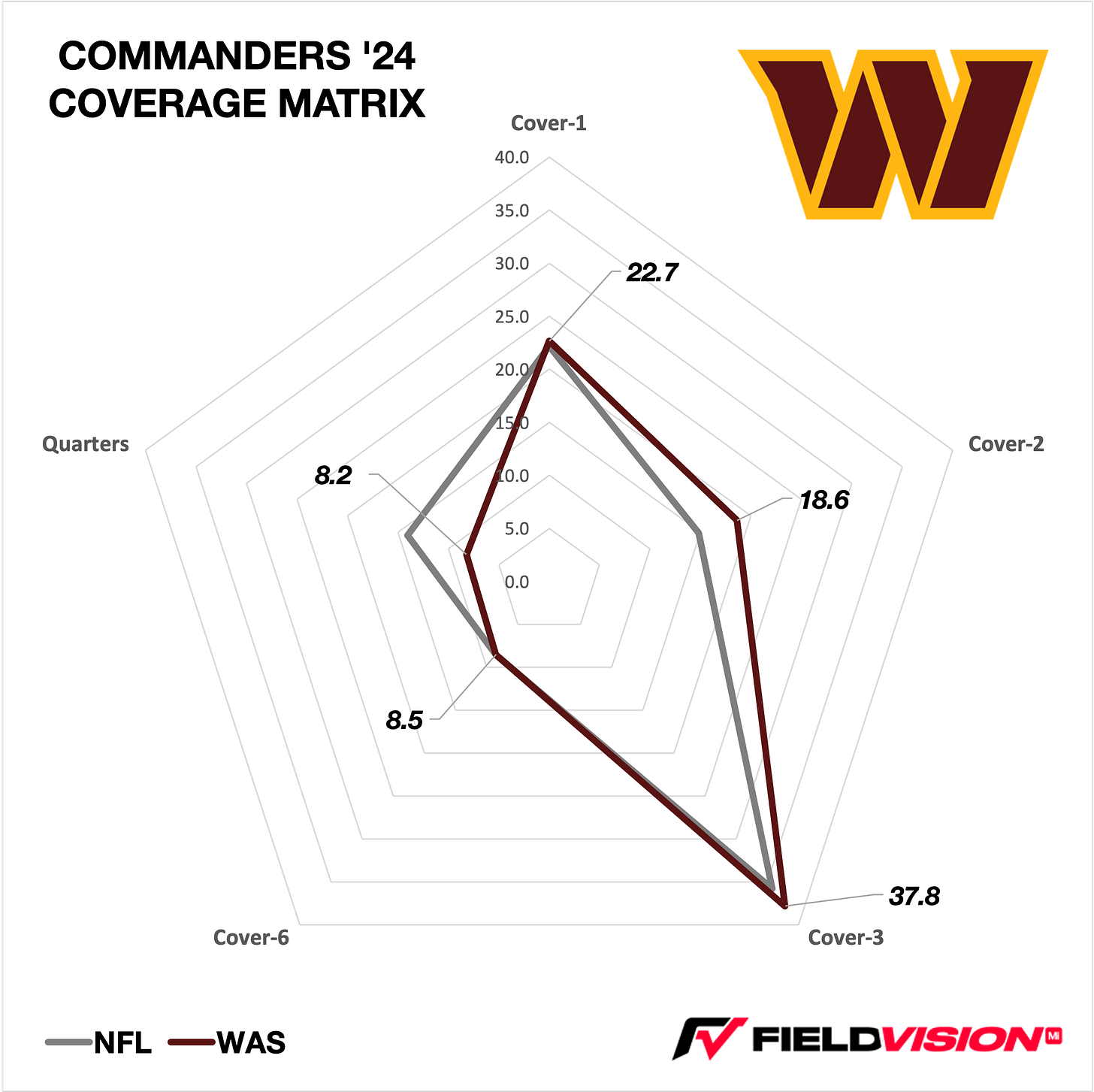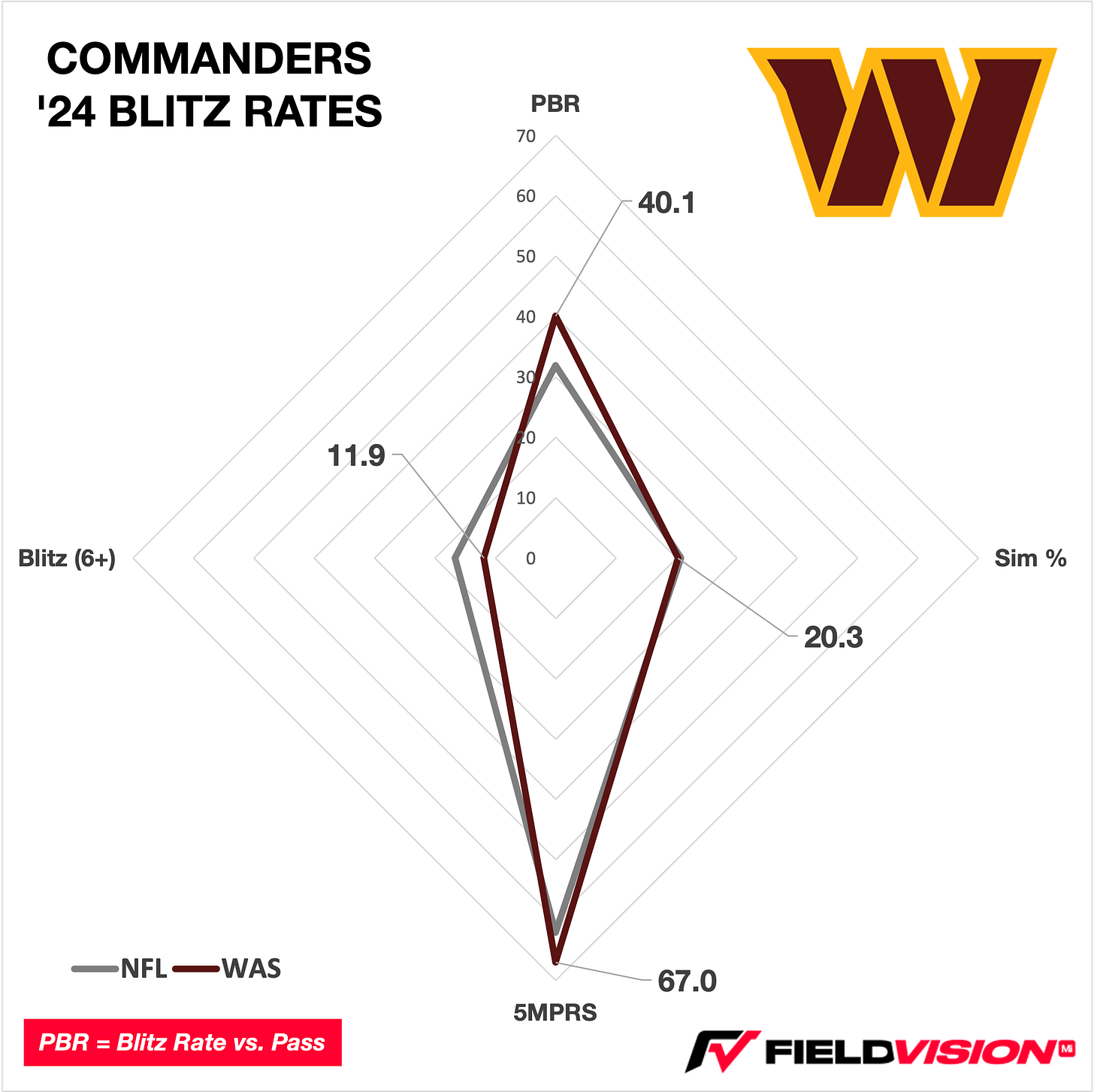The Commanders 'Mike' Simulated Pressure with a Non-Traditional Tampa
Against the Buccaneers, Head Coach Dan Quinn and Defensive Coordinator Joe Whitt Jr. used a 'Bear' alignment in their Nickel package to attack Baker Mayfield and the Tampa offense.
Head Coach Dan Quinn’s defense in DC was a far cry from what it had been in Dallas the past few seasons, and that isn’t a bad thing. Quinn’s ultra-light Nickel defense had run its course by the time he chose to leave for the Commanders job.
Though the Cowboys had two of the better cornerbacks in the NFL, they rarely played together. The defense didn’t have a true linebacker; outside Osa Odighizuwa (who just got paid!), there wasn’t an inside presence. Quinn tried to manufacture a defense that thrived on man-coverage and used ‘Trap’ Cover 2 concepts as change-ups.
In Dallas, every issue in the backend would be solved with man coverage, while everything in the box, would be answered by Micah Parsons and ‘Tank’ Lawrence. The NFL ecosystem had other plans. Starting last season, more teams focused on running the ball, especially against light box defenses like the Cowboys. There were losses to the Cardinals, 49ers, Eagles, Bills, and Dolphins, all teams that focus mainly on running the ball.
Though Dallas overcame those losses to finish 12-5, they were bounced again in the first round of the NFL playoffs. When Quinn took the job with the Commanders, and brought his secondary coach Joe Whitt Jr. with him, many thought he would try to manufacture the same looks in DC. The problem was the roster.
During free agency, the Commanders quickly signed two star ILBs, Bobby Wagner and Frankie Luvu. Wagner is the best pure ‘Box’ linebacker in the NFL and Luvu is one of the best pass rushing hybrid LBs. Combined, they allowed Quinn to solidify the box without sacrificing size. Both LBs complement each other’s games.
When a coach goes to a new team, there is an opportunity to learn and evolve from their previous spot. Quinn did just that with the help of GM Adam Peters. Wagner and Luvu solidified the second-level of the box and would be protected by Jonathan Allen (DT26 in Field Vision’s Havoc Ratings), rookie DT Jer’Zhan Newton (DT36), and Daron Payne (DT48).
The irony is that the Commanders weren’t very good at stopping the run early in the season. Over time, Quinn and Whitt figured out what their defense could do and how to implement the players they had. Wagner and Luvu would become All-Pros and stabilize the play in the middle of the field, but Quinn is still trying to figure out how to fit their run from light boxes on almost every down. The Commanders led the NFL in Nickel usage (83.2%).
From Week 6 to Week 10, the Commanders jumped in EPA (above) and slowly improved as the season progressed. Washington was 22nd in EPA (-.016) and 16th in defensive success rate (63.5%). The pass coverage was a pleasant surprise, and finished tenth in dropback success rate (62.2%) and 14th in dropback EPA (-.005).
Part of the catalyst for success on defense was found at the top of the draft. Quarterback Jaden Daniels gave the Commanders’ defense the ability to breathe by having an offense that could score points and stay on the field. Second-round picks Newton and CB Nick Sainristil became key contributors, with the latter a bona fide day one starter. Newton’s success has allowed Washington to move off Jonathan Allen’s contract.
Finally, GM Adam Peters traded for the Saints Marshon Lattimore. Though Lattimore only played in nine games last year (two for the Commanders) he will be a vital part of the secondary’s success from now on. Lattimore finished as CB5 in Field Vision’s Havoc Ratings. He played at a high caliber when he was on the field.
Quinn shifted from a man-centric style to one that mainly featured Cover 3. The Commanders were right at the league average for Cover 1, which is a departure from Quinn and Whitt’s philosophy in Dallas. The ability to run non-traditional Tampas was still there. 18.6% ranks the Washington eighth in Cover 2 usage.
Blitzing in the NFL can mean different things to different coaches. For instance, Vic Fangio, the Eagles' defensive coordinator, prefers to run simulated pressures (blitz, but only rush four), while others prefer to send five. Brian Flores in Minnesota typically sends five rushers, but it is often without an off-ball blitz.
Quinn is more of a traditionalist. The Commanders run two-thirds of their pressures in the five-man variety, using Luvu’s unique ability to rush the passer. Washington was eight in total Blitz Rate (BR) and Pass Blitz Rate (PBR). One area Quinn and Whitt expanded from their days in Dallas was their sim pressure package. The Commanders were dead on the league average in their usage.
Keep reading with a 7-day free trial
Subscribe to MatchQuarters by Cody Alexander to keep reading this post and get 7 days of free access to the full post archives.


